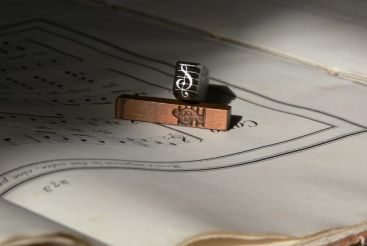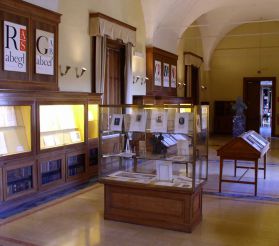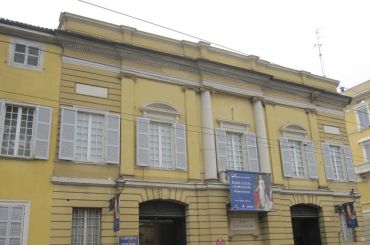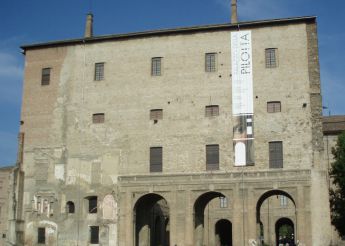Museum Bodoni, Parma
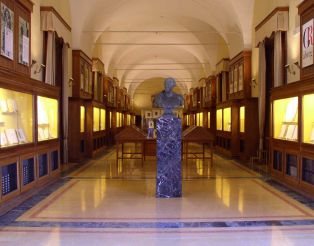
Museum of Giambattista Bodoni in Parma is dedicated to the famous Italian printer, engraver and creator of hundreds of different fonts. It is a museum of the history of the creation of books, as well as books, bringing light and knowledge to people through the ages. The core of the collection is a variety of items from the original Bodoni printing house, carefully stored in the Palatina library.
History of the museum
Giambattista Bodoni in 1768 headed the Ducal Printing Office of Parma, and in 1773 founded his own. He raised production to a whole new level due to the tremendous quality of the work performed. He cooperated with many of the royal courts of Europe. He was respected far beyond Italy. As a token of this, he had a number of awards and honorable medals from the Spanish, French governments, and also became an honorary citizen of Parma.
The idea of creating the museum was born in 1940, the 200th anniversary of the birth of Bodoni. Alas, the Second World War prevented the plans, during the bombing the library, where the treasures of the printing house were stored, was almost completely destroyed. But technical and bibliographic material, hidden in boxes, somehow miraculously managed to be preserved. After the economy returned to a stable level in 1957, the museum project was resumed. In 1960, they signed a legal act on the establishment of the museum, and on July 18, 1962, they approved the Statute. Rooms for the museum were restored and allocated on the top floor of the library Palatina. It was opened on November 17, 1963, on the occasion of the 150th anniversary of the Bodoni’s death.
In 1983, after the earthquake, the museum was closed, later it functioned poorly due to insufficient funding. In 1999, the reorganization of the institution began. In 2004, it joined the Association of European Print Museums, and since 2005, it is a head of the Italian Association of Newspapers and Paper Museums.
Collections of the museum
The collection consists of thousands of volumes, correspondence and typographic tools of the Bodoni printing house. Here you can find out about the entire history of creating books, ranging from manuscripts and to printed publications. All the variety of the collection can be divided into several parts:
- Publications of the printing house, some unique and very rare, executed on silk and parchment. They make up one of the richest collections in the world. The most valuable work with respect to the rarity of the publication and the era to which it refers is the Iliad in the Greek language of 1808.
- Correspondence consisting of 12 000 letters.
- Documents, collections of evidence and typographical essays, samples of the most famous foreign and Italian foundries.
- An unusual set of punches (22618 pieces), wooden matrices (42 148 pieces), molds and tools produced by Bodoni.
- Four original neoclassical cabinets inside which the printer placed punch cards and a number of matrices.
- Precise reconstruction of the printing press used by the Parma printer.
Also among the exhibits there are manuscripts and books of the period of 15-20 centuries, printed products of the province of Parma from 1472 to today. In addition, the museum provides the public with its own specialized modern library. It contains volumes on the art and history of the printing house, the history of the book, valuable works of the Italian publishing house, numbered editions and special articles, graphic studies and editorial design, facsimiles, essays and monographs.
How to get there
The museum is located in the south wing of the majestic and old Palazzo della Pilotta, on Strada alla Pilotta, 3. It is the very center of Parma. Nearby there are the National Archaeological Museum and the Lombardi Museum. In 2 minutes there is a bus stop Pza Ghiaia. It can be reached by routes 6, 7, 8, 9, 11, 12, 13, 21, 23.
Opening hours: from 9:00 to 13:00. Sunday is a day off. A reservation is required from Monday to Friday, reservation is not required on Saturday. The last reception of visitors begins at 12:15. Phone number (+39) 0521 220411.
Admission: there is no entry fee. Excursion with a guide will be paid, and it requires a reservation. The ticket price is 12 euros, a group ticket (from 6 to 25 people) is 70 euros. Data of June 2018.



